The Back Room
The Back Room: Has the Art Market Peaked?
This week: How to tell if the market is headed for recession, a collector’s battle with a fruit company, the Asian market’s newest darling, and more.
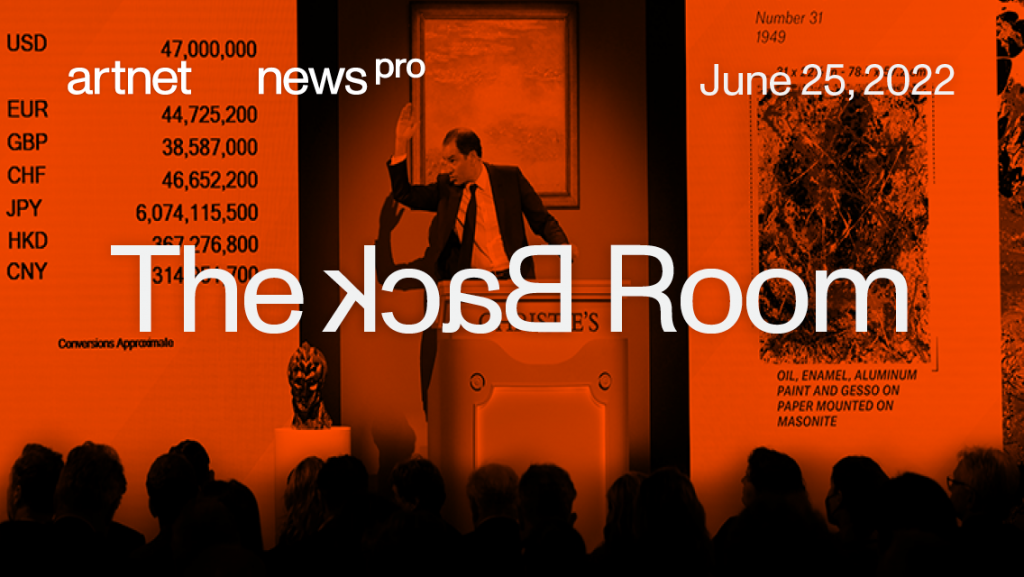
This week: How to tell if the market is headed for recession, a collector’s battle with a fruit company, the Asian market’s newest darling, and more.

Julia Halperin

Every Friday, Artnet News Pro members get exclusive access to the Back Room, our lively recap funneling only the week’s must-know intel into a nimble read you’ll actually enjoy.
This week in the Back Room: How to tell if the art market is headed for a recession, a collector’s legal battle with a fruit company, the Asian market’s newest darling, and much more—all in a 6-minute read (1,800 words).
________________________________________________________________________________________
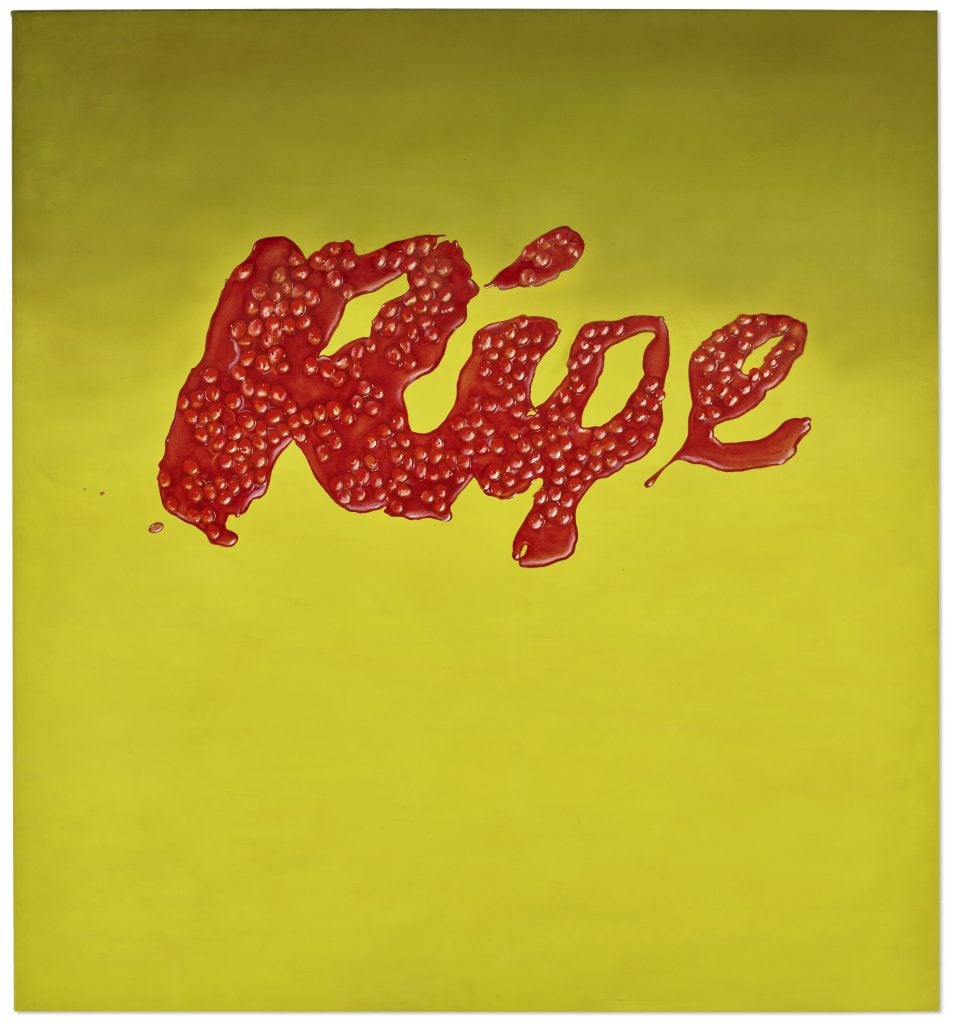
Ed Ruscha, Ripe (1967). Courtesy of Christie’s Images, Ltd.
Calling the top of any market is tricky. But as a recession looms, cryptocurrency continues its freefall, and inflation reaches record highs, some people are saying it: The art market has peaked.
“I think we already passed the top of the market,” a money manager with a major bank told Artnet News’s Katya Kazakina last week. “We are over the hump and now on our way down.”
We’ve been here before. There was the bloodbath of October 2008 in London—the Phillips evening sale where lot after lot after lot after lot flopped. There was the fall of 2016, when Zombie Formalism imploded.
This time around, things are different. The pandemic has transformed the way the market operates—what it values, how it retains value, how it processes information.
Here are three key indicators market observers are watching now as they try to gauge what comes next—and why, in each case, it will be more difficult to break through the noise than ever before.
1. Interest Rates
Since the 2008 financial crisis, the growth of the art market (and other alternative asset classes) has been underpinned by historically low interest rates. Not anymore. After U.S. inflation hit 8.6 percent in May, the Federal Reserve raised its short-term benchmark rate by 0.75 percent, the biggest hike since 1994. If history is any guide, it’s going to take a little while for these changes to be felt in the art market: global auction sales didn’t decline sharply until 2009, the year after the Great Recession hit. But they will.
Complicating Factor: Inflation
While the diminished supply and tentative demand that often accompany a market contraction push prices down, inflation—which we are currently experiencing across the economy—pushes prices up. “I don’t know which direction the average [price for art] is going to take given those contradictory forces,” said Yale professor William Goetzmann.
2. Auction Results
Because sellers often consign works between six and three months in advance, auction results can be a lagging indicator of market health. But a slowdown will eventually be visible as a decline in volume, especially in high-priced lots, as well as in sell-through rates. (In 2009, the number of works consigned with a low estimate of $10 million or higher dropped nearly 75 percent.) Keep an eye on next week’s London sales, and an even closer one on November’s marquee New York auctions, to see how the composition and size of the sales evolve.
Complicating Factor: Withdrawals
Savvy auction houses have learned how to boost their sell-through rates by simply withdrawing the lots that don’t drum up enough presale interest. That makes the true state of play harder to discern.
3. Speculation
Since the onset of the pandemic, new money has poured into the art market’s most speculative segments: NFTs and emerging art. Such high-flying sectors have also historically been hit hardest in a downturn (think: French contemporary art in the early 1960s, non-conformist Russian art in the 1990s, and Zombie Formalism in the mid-2010s).
Complicating Factor: BOGO
These days, galleries promote “BOGO” deals, selling coveted pieces only to collectors who promise to buy a second work and donate it to a museum. Forthcoming market turbulence will be a test of whether this new development can shield young artists from being wiped out by the market.
Savvy auction houses have learned how to boost their sell-through rates by simply withdrawing the lots that don’t drum up enough presale interest. That makes the true state of play harder to discern.
The Bottom Line
The practice of reading the art-market tea leaves proves just how much the business has changed since the onset of the pandemic. Traditional signs of a downturn—declining prices, lower sell-through rates, and the puncturing of speculative bubbles—may no longer offer an accurate barometer. More revealing are lackluster consignments, smaller sales, and, on the primary market, the disappearance of hoops to jump through in order to access work by young artists. In other words, if you no longer have to BOGO, it might be a signal to GTFO.
________________________________________________________________________________________
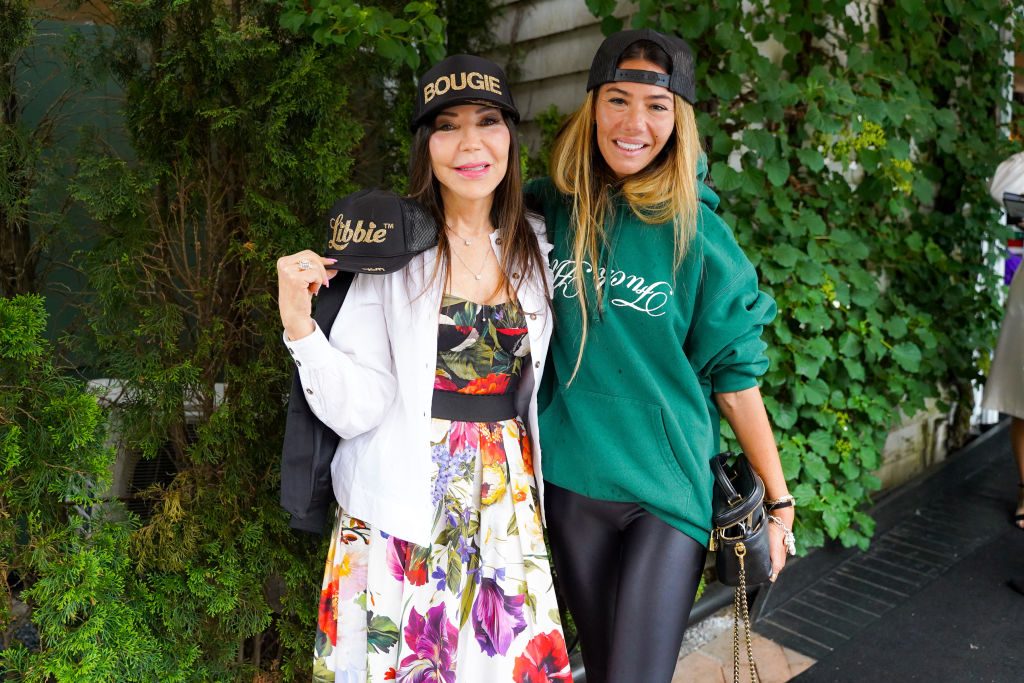
Jane Scher (right) and Libbie Mugrabi sporting Libbie’s hats at an event on May 28, 2021 in Southampton, New York. (Photo by Sean Zanni/Patrick McMullan via Getty Images)
In this week’s Wet Paint, collector Libbie Mugrabi is forced to change the name of her accessories company to resolve a legal dispute with a fruit producer (you can’t make this stuff up!) and a group of NFT artists are going to the moon.
Here’s what else made a mark around the industry since last Friday morning…
Art Fairs
Auction Houses
Galleries
Institutions
Other Business
________________________________________________________________________________________
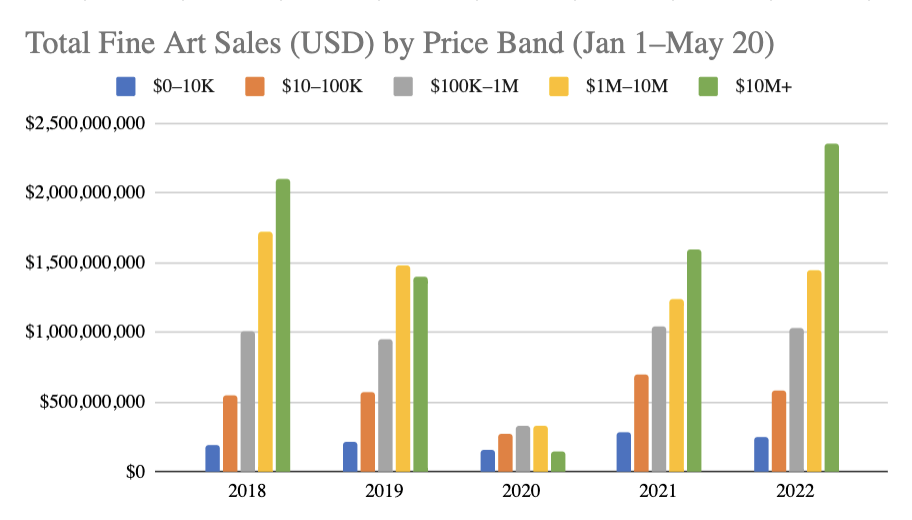
© Artnet Price Database and Artnet Analytics 2022.
As we continue to forecast how a recession will impact the art market, let’s look at some numbers, shall we? The graph above charts global auction sales at different price points in the first five months of the year. Here’s what it can teach us about the market’s vulnerability.
The takeaway?The first five months of 2022 were extraordinary because of the volume and quality of art on offer. (Do the names Bass, Ammann, or Macklowe ring a bell?) In all likelihood, it’s downhill from here, recession or not. But a top-heavy art market is always more vulnerable to a correction because collectors with flexibility will opt to hold onto their prize works and wait for a better climate in which to sell. In this way, market jitters can often end up becoming a self-fulfilling prophecy.
________________________________________________________________________________________
“She wanted to know if I had any gin. That’s one of my favorite things to drink.”
—Larry Gagosian on his first dinner with his 27-year-old now-girlfriend, artist Anna Weyant, in a longform profile detailing the cutthroat power plays behind the talented painter’s meteoric rise. (Wall Street Journal)
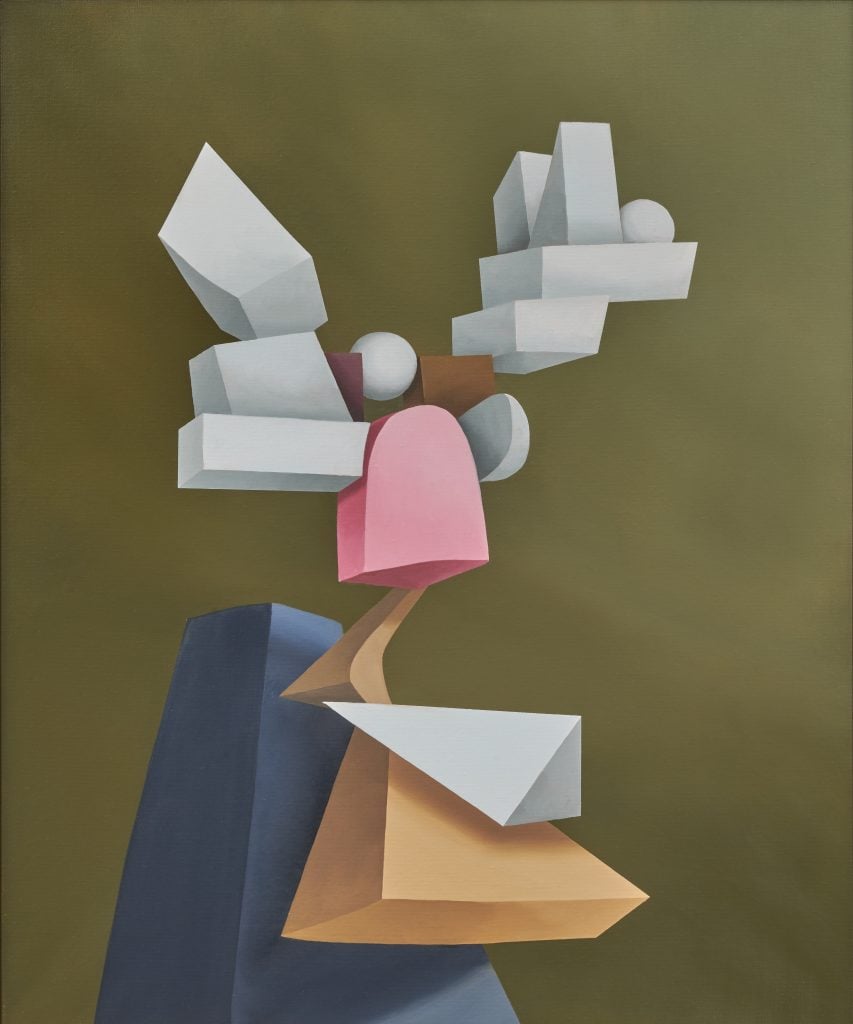
Jason Boyd Kinsella, Summers (the elder) (2021). Photo courtesy of Phillips.
________________________________________________________________________________________
Date: 2021
Price: HK$1.6 million ($208,658)
Estimate: HK$150,000–250,000 ($19,200–32,100)
Sold at: Phillips Hong Kong
Sale Date: June 21
________________________________________________________________________________________